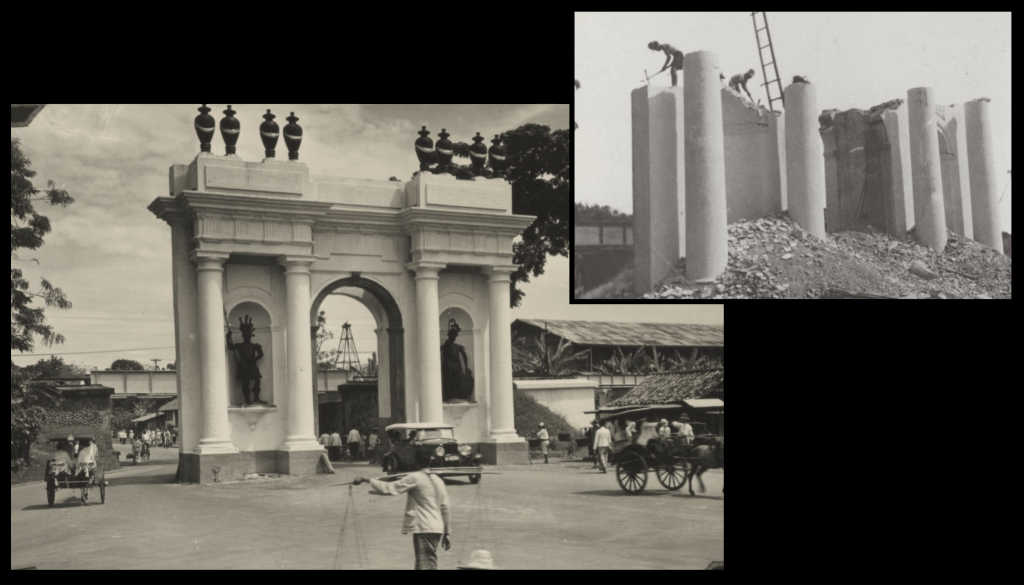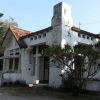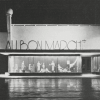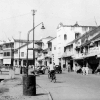
In the early morning hours of Friday 15 December 1950 men with sledgehammers arrived at Jalan Cengkeh (the former Prinsenstraat) to start demolishing the “Amsterdamse Poort” (Amsterdam Gate or Gerbang Amsterdam). It was one of the last remainders in the city dating back to the 17th century and also the only surviving part of Batavia’s old castle. The gate had been remodelled a number of times. Until the late 1860s it still had its side wings, however they were removed to allow trams to pass by. Instead of demolishing the gate it was decided to let the trams take a circular route around the gate. During World War II the two statues of Mars and Minerva had disappeared.
Traffic obstacle
Ultimately the Jakarta City Council decided in 1950 that the Amsterdam Gate was a traffic obstacle for through traffic and that it had to be demolished. Due to the solid structure of the gate this took a few weeks until early 1951. Apart from a traffic obstacle it was obviously also an obstacle reminding one of the colonial past. An interesting contemplation: if the Amsterdam Gate would have survived until the 1970s, would Jakarta’s Governor Ali Sadikin (1927-2008), who has been hailed for his passion to preserve important parts of Jakarta’s history, have decided to also preserve this gate, and build the road simply around it? It possibly had the potention to become a tourist attraction. However there are no remains of the Amsterdam Gate today.
source: NMVW, ANP





